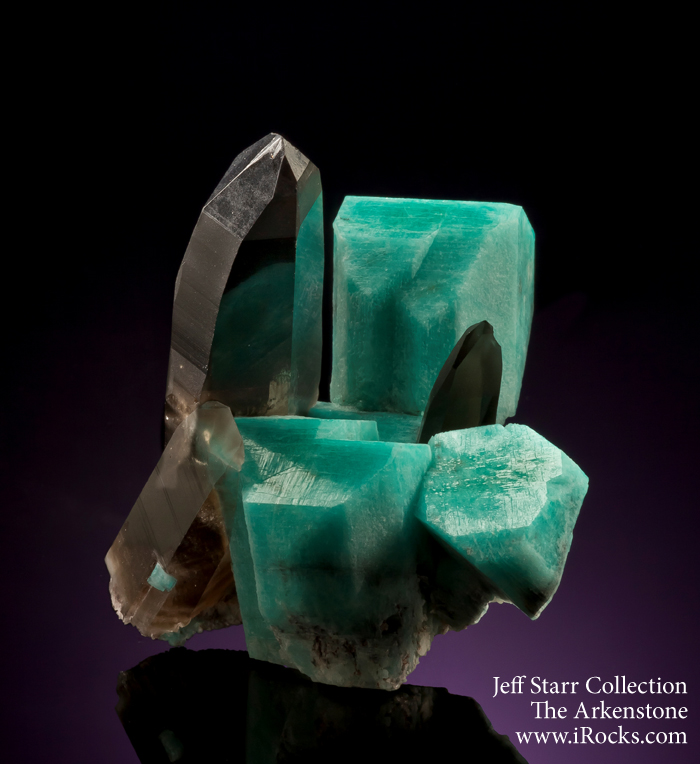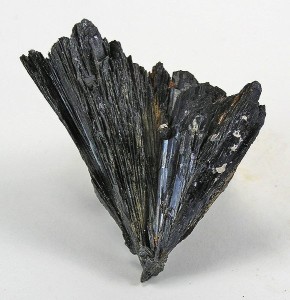Colorado Gem Mines - Famous Mineral Localities
Gem Mines, Crystal Peak Area, Colorado
Nestled high up in the Colorado Rockies near Crystal Peak is a mining area known for its fabulous teal blue Amazonite and smoky quartz crystal combinations. The Gem Mines are part of a larger region of Colorado that has been actively producing superb mineral specimens for over 100 years. The finest of these pieces have been stars within world famous mineral collections adding flash of striking color, contrasting lusters, and dynamic shape.
HISTORY
A miner-cowboy by the name of Albert E. Whitmore moved to the area in 1908 and staked out the Gem Mines claims, which were established by the Crystal Peak Gem Company. During his mining years, Whitmore sold his bounty in a small store near his log cabin. After 1933, sharply pointed Smoky Quartz prisms and stocky green Amazonite crystals were the specimens most commonly yielded by the mine – one smoky quartz crystal even measured 31 by 18 cm and weighed 24 kilograms! Whitmore’s cabin was remarkably still standing 70 years later until the Hayman Fire, one of the largest wildfires in Colorado State History, burned through the area in 2002. The area is currently under a commercial operation and continues to produce excellent fine mineral specimens.
GEOLOGY
The Gem Mines are a series of pegmatite dikes that can produce a wide variety of minerals. Specimens have been found both through excavation and as exposed “float”, which are crystals exposed due to weathering. Finding where float rocks come from is the most common method of finding pockets and dikes for more aggressive mining techniques. The first record of minerals being collected from this region dates back to the 1870s when A.E. Foote – a prominent Philadelphia mineral dealer – sent skilled prospectors to the area in an attempt to recover fine crystal specimens. The Crystal Peak region benefits from the fact that there are no major ore bodies or metal deposits for large mining companies to exploit, so the collection is left to rock hounds and specimen-focused mining operations.
MINERALS
The most common minerals to come out of the region are:
Fine Amazonite Crystals is what makes the Gem Mines famous. This teal-blue microcline – color coming from small amounts of inter-structural lead – is commonly complimented by contrasting deep brown smoky quartz. About 80% of the Amazonite crystals also have ‘white caps’, where the terminations are coated with a white to beige colored overgrowth of microcline, adding further contrast and flare. Amazonite crystals are typically in the 3 to 5 cm range, and sometimes form in interesting twin law habits such as Baveno twins – crystals with a contact plane on the {021} plane. Amazonite is what made the Gem Mines famous, because they have produced some of the best aesthetic examples of the species.
Another species of note at the Gem Mine is Goethite. While normally a rather dull and non-descript species, this locality has yielded gleaming, lustrous brown to black sprays., The fluorite comes in blue, white, purple, or, rarely, green cubes and octahedrons, though few have excellent luster. Occasionally, this fluorite combines with Amazonite to form specimen-worthy assemblages. Cassiterite twin crystals to 3 cm long have also been recovered.
View more mineral specimens for sale from Colorado!
REFERENCES
Bancroft, P. (1984). Gem & Crystal Treasures. Western Enterprises Mineralogical Record.
Crystal Peak, Colorado Area: Amazonite, Smoky Quartz, Topaz. Buena Vista Gem Works (2004, March 1). Retrieved January 4, 2015

